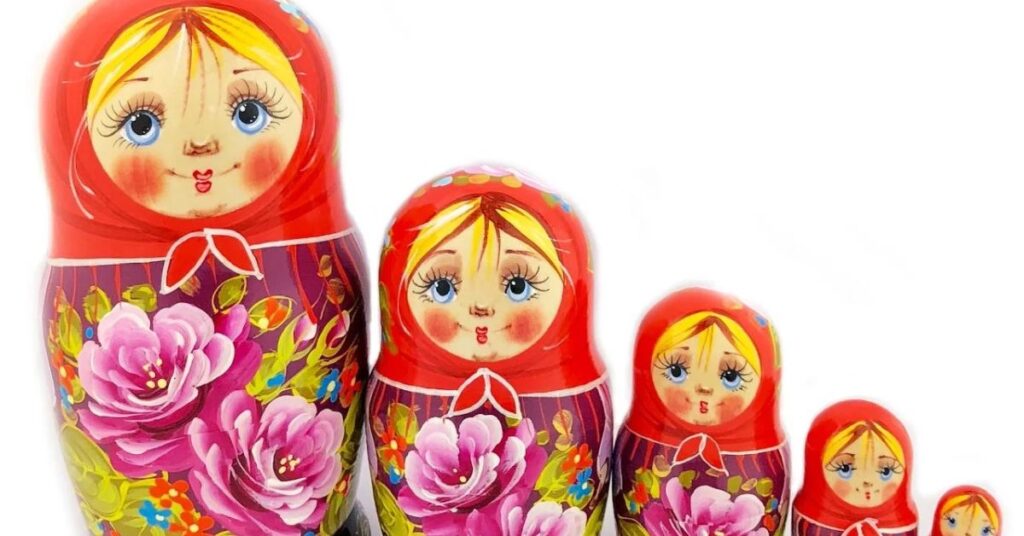Have you ever opened a set of nesting dolls, delighting in the discovery of smaller and smaller figures inside? Nesting dolls, known for their distinct look and detailed craftsmanship, have charmed people worldwide for generations. But what are these intricate dolls, and how did they come to be so iconic? In this article, we’ll explore the rich history, cultural significance, and artistry behind nesting dolls, offering an in-depth look into one of the most beloved collectibles.
What Are Nesting Dolls?
Nesting dolls, also known as Matryoshka dolls, are a series of wooden figures that fit one inside the other. Each set traditionally consists of a larger doll containing smaller dolls, each painted in colorful, distinctive designs that often depict people, animals, or traditional scenes. Nesting dolls are typically made from wood and are crafted in a way that allows each figure to snugly fit within the next, forming a seamless unit when closed.
The History and Origin of Nesting Dolls
Nesting dolls originated in Russia in the late 19th century. The first set is believed to have been created by Vasily Zvyozdochkin, a Russian toy maker, and painted by artist Sergey Malyutin in 1890. Their creation was inspired by a Japanese set of nesting dolls known as Fukuruma, which depicted figures of an old sage with smaller figures inside.
The Russian nesting dolls, however, took on their own identity, reflecting Russian culture and folklore. Named “Matryoshka,” the dolls were typically painted as a peasant woman in traditional dress, symbolizing motherhood and family. Over the years, Matryoshka dolls gained popularity and came to represent not only Russian culture but also unity, family, and heritage.
The Craftsmanship Behind Nesting Dolls
Creating nesting dolls is a complex art form that requires skill, patience, and an eye for detail. These dolls are typically made from a variety of wood types, with linden wood being the most popular due to its softness and ease of carving. Here’s an overview of the process involved in creating nesting dolls:
- Selecting the Wood: Linden wood, known for its softness and even grain, is the preferred material for nesting dolls. The wood is cut, dried, and stored for years to achieve the ideal texture and moisture level before carving.
- Carving: Skilled artisans carefully carve each doll by hand or use a lathe for a more precise shape. The carving process starts with the smallest doll, which is solid and not hollow. This small doll serves as the template for each larger piece, with each layer increasing in size.
- Painting: After carving, each doll is smoothed, primed, and meticulously painted. Traditional designs often include bright floral patterns, scenes of Russian village life, or detailed facial expressions. The painting of nesting dolls is typically done by hand, making each set unique.
- Lacquering: Finally, each doll is coated in a protective lacquer, which preserves the paint and gives the dolls their signature glossy finish.
Types of Nesting Dolls
Nesting dolls are available in various styles, with each reflecting different artistic expressions, regional characteristics, and cultural themes. Here’s a look at some of the most popular types:
1. Traditional Matryoshka Dolls
The traditional Russian Matryoshka is the most widely recognized nesting doll. These dolls often feature a motherly figure dressed in a traditional sarafan (Russian peasant dress) and headscarf. Each doll within the set typically resembles the others but decreases in size, symbolizing family, unity, and continuity.
2. Themed Nesting Dolls
Themed nesting dolls are a popular variation that may represent famous figures, seasonal celebrations, or beloved characters. From political leaders and historical icons to holiday-themed figures, these dolls are often collected as souvenirs and make popular gifts.
3. Animal Nesting Dolls
Another beloved variation, animal nestingdolls depict animals rather than people. These sets are popular among children and collectors, featuring animals like cats, dogs, bears, or birds. Animal-themed nestingdolls add a whimsical twist to traditional designs and are often painted in bright, playful colors.
4. Custom and Modern Nesting Dolls
Modern nestingdolls offer a fresh take on this classic art form. Many contemporary artists create custom nestingdolls, which might reflect modern lifestyles, family portraits, or abstract art. These modern renditions have helped nestingdolls gain popularity beyond Russia and have become an international art form.
The Cultural Significance of Nesting Dolls
Nestingdolls carry deep cultural and symbolic meanings. Traditionally, they represent family, fertility, and the connection between generations. Each doll within a set is part of a whole, representing unity and continuity. In Russian culture, they symbolize motherhood, with the largest doll often representing the matriarch of the family and the smaller dolls representing her children.
The symbolism of nestingdolls has expanded over time, and today, they are seen as symbols of diversity and identity. Many collectors view them as a celebration of heritage, and some artists create nestingdolls that reflect different cultural backgrounds and customs. As a result, nestingdolls have become a cherished symbol of cultural pride and a way for people around the world to connect with their heritage.
How to Choose Authentic Nesting Dolls
When purchasing nestingdolls, it’s essential to distinguish between authentic, handcrafted pieces and mass-produced replicas. Here are some tips for identifying authentic nestingdolls:
- Look for Hand-Painting: Authentic nestingdolls are usually hand-painted with intricate designs and unique details. Mass-produced dolls may have machine-applied decals or simpler designs.
- Check the Material: Quality nestingdolls are made from linden or birch wood. Cheaper alternatives may use other materials or thin wood that lacks durability.
- Verify the Origin: Genuine Russian nestingdolls will often come with certificates of origin, especially if purchased from reputable sellers or galleries. Look for sellers who specialize in traditional Russian art.
- Examine the Lacquer Finish: Authentic nestingdolls have a polished, glossy finish created by several layers of lacquer. Low-quality replicas may have a dull or uneven finish.
Caring for Nesting Dolls: Tips for Preservation
To preserve nesting dolls and maintain their beauty, follow these care tips:
- Keep Them Away from Direct Sunlight: Sunlight can fade paint over time, so store your nestingdolls in a shaded area.
- Avoid Moisture and Humidity: Excess moisture can cause wood to warp. Keep your nestingdolls in a dry environment, away from areas with high humidity.
- Dust Gently: Dust your nestingdolls regularly with a soft, dry cloth. Avoid using water or cleaning products, as they can damage the lacquer.
Nesting Dolls as Collectibles and Decorative Art
Collecting nestingdolls has become a hobby for many art enthusiasts and cultural collectors. Each doll set is a piece of history, often reflecting Russian artistry, folklore, and themes from different time periods. Some collectors seek rare or vintage nestingdolls, such as sets from famous Russian workshops or limited-edition series.
As decorative art, nestingdolls can add a touch of heritage and charm to any home. Displaying these colorful dolls can make for a beautiful and unique centerpiece, showcasing cultural pride and appreciation for traditional craftsmanship.
The Global Appeal of Nesting Dolls Today
Over the years, nestingdolls have gained international appeal, transcending Russian culture and becoming part of a global art market. Collectors around the world appreciate the craftsmanship and cultural significance of these dolls, and many artists have adopted the concept to reflect their unique styles.
Today, nestingdolls are sold in various parts of the world, with versions that celebrate other cultures, nature, or modern pop culture icons. They have become a beloved art form, cherished not only for their beauty but also for their symbolic representation of interconnectedness and family.
Are There Alternatives to Traditional Nesting Dolls?
While Russian nestingdolls remain the most popular, there are other forms of stacking dolls with roots in different cultures. Japanese Kokeshi dolls, for instance, are another type of traditional wooden doll, although they do not nest within one another. These dolls often feature simple designs and represent various Japanese regions. Other cultures have also developed stacking or figurine sets, reflecting diverse artistic interpretations.
Conclusion:
Nesting dolls are much more than wooden figures; they are a symbol of unity, family, and tradition that transcends time and borders. The meticulous craftsmanship, vibrant designs, and rich history behind these dolls make them a cherished collectible for people around the world. Whether you’re drawn to the artistry, the cultural significance, or the sheer beauty of nesting dolls, they remain a timeless representation of heritage and craftsmanship.
Next time you see a set of nesting dolls, remember the history, the artist’s skill, and the cultural symbolism that goes into creating each one. With proper care, these beautiful dolls can be a lasting treasure, connecting you with a tradition that spans generations.







